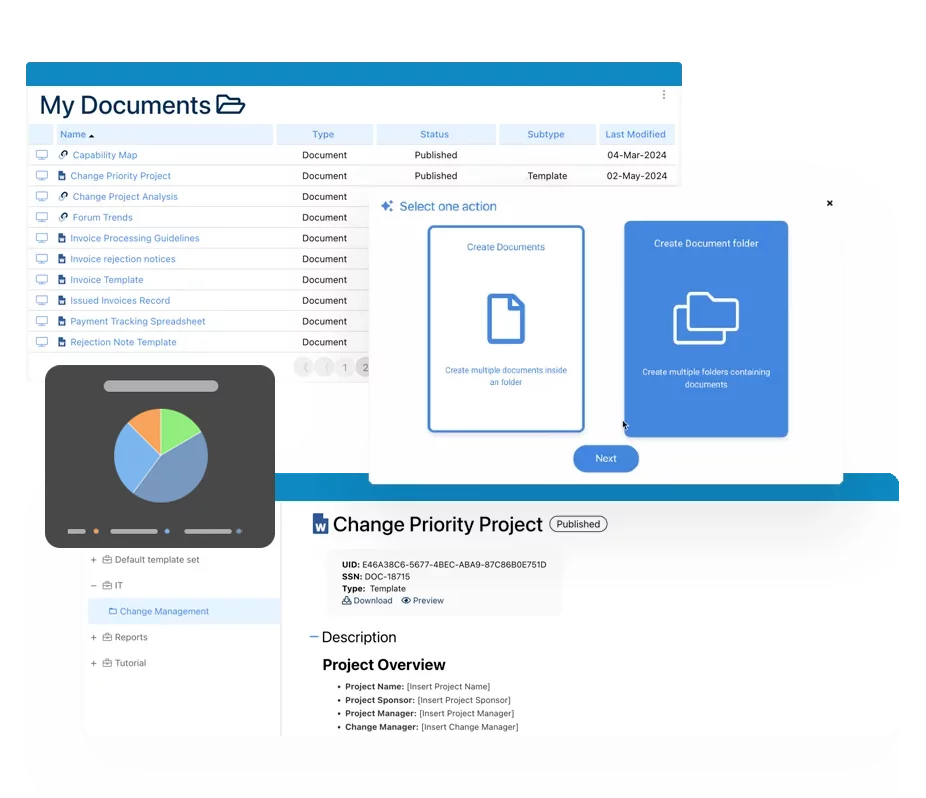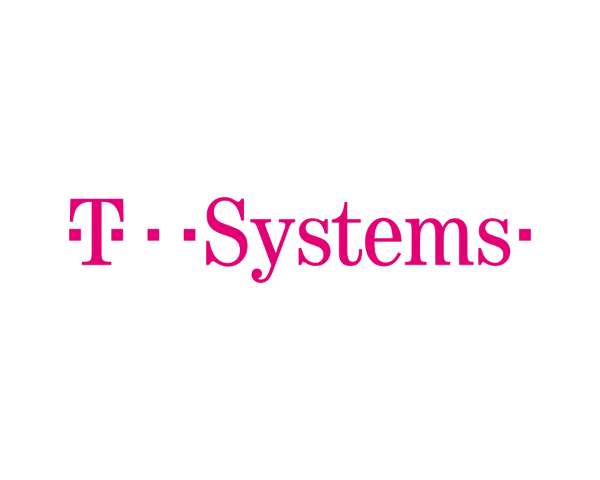- Business Process Management (BPM)Document Management System (DMS)Electronic Quality Management System (QMS)Risk, Governance & Compliance (GRC)Low Code Rapid Application Development (LC)Business Continuity Management (BCM)Enterprise Architecture (EA)Business Process Management (BPM)Document Management System (DMS)
- Document Control Overview
- AI Content Creation & Improvement
- Policy & Procedure Management (SOP)
- AI Content Mining Parser
- Collaboration & Governance
- Data Migration & Integration
- Interfacing Offline App
 Electronic Quality Management System (QMS)
Electronic Quality Management System (QMS)- Quality Management System Overview
- Document Control & Records Management
- Audit & Accreditation Management
- Corrective & Preventative Action
- Quality Event (Non-conformity / Complaint/ Compliance)
- Risk Management
- Incident Management
- Environmental Health & Safety
- Product & Supplier Management (SCAR)
- Training Management
- Control Management
- Action Items Management
- Management Review
- FMEA
- Pharmacovigilance
- Data Migration & Integration
 Risk, Governance & Compliance (GRC)
Risk, Governance & Compliance (GRC)- Risk, Governance & Compliance Overview
- Risk & Control Management
- Regulatory Compliance
- Collaboration & Governance
- Data Migration & Integration
- Interfacing Offline App
 Low Code Rapid Application Development (LC)
Low Code Rapid Application Development (LC)- Low Code Automation Platform Overview
- Electronic Web Form Design (eFORMS)
- Database Table Entity Designer
- System Integration Designer
- Design & Manage Tasks
- Design & Manage BPMS Apps
- Custom Rules/Guards/Actions
- Electronic Services
- User Homepage
- BAM (Business Activity Monitoring)
- Custom Dashboard Design
- Data Migration & Integration
 Business Continuity Management (BCM)
Business Continuity Management (BCM)- Business Continuity Management Overview
- Business Impact Analysis
- Disaster Recovery Simulation
- Action Item Management
- Mass Notification Management
- Asset Management
- Interfacing Offline App
 Enterprise Architecture (EA)
Enterprise Architecture (EA) - IndustriesRegulatory ComplianceUse CasesLearning CenterFramework & PracticesIndustries
- Healthcare
- Medical Device Technology
- Life Science, Pharmaceutical
- Aerospace & Defense
- Airlines and Aviation
- Media & Telecommunications
- Government and Military
- Technology
- Energy
- Logistics & Port Operations
- Banking & Capital Markets
- Retail & Consumer
- Consulting
- Education
- Engineering & Construction
- Manufacturing
- Financial Services
- Insurance
- Chemicals
Regulatory Compliance- Regulatory Compliance
- ISO
- ISO 9001 (guide)
- ISO 9001:2026 (preparation)
- ISO 17025
- ISO 27000
- ISO 27001
- ISO27002
- ISO 42001
- EU AI Act
- SOC 2 Type 1 & 2
- Sarbanes Oxley
- GxP
- GRC
- Basel
- Digital Signature
- GDPR
- IFRS
- NIST SP 800-53
 Use Cases
Use Cases- Quality Management System (QMS)
- Digital Transformation
- Continuous Improvement
- Governance, Risk & Compliance
- Knowledge Management
- System Deployment (ERP, CRM…)
 Learning CenterFramework & Practices
Learning CenterFramework & Practices - AboutCustomer SuccessPartners



GDPR - General Data Protection Regulation
Please Select contact form.
GDPR: Not an option, but a necessity for any organization nowadays

Background of GDPR
After the privacy concerns escalated via allegations faced by the CEO of Facebook- Mark Zuckerberg in March 2018, data privacy issues took a new turn and grabbed global attention.
As a ripple effect, people started to raise their individual privacy concerns. Active and passive digital footprints become a matter of discussion, which gave rise to several questions.
The ideology of what lies under the umbrella of personal data and what does not became a serious issue for the European Union too. That is when the idea of General Data Protection Regulation, or GDPR got seeded, and eventually updated the laws of personal data privacy protection and control.
Fundamentals of GDPR
The ultimate aim of this regulation was to legally protect basic individual privacy while making such trade-offs which do not hurt the organizations excessively. Meanwhile, it helped European inhabitants to recognize the importance of correct use of their personal data. Here are the fundamental rights given to data subjects under GDPR.
A person lying under the authority of the EU will have rights to:
- Have complete and free access to his/her personal data for the lifetime
- Make changes to correct the existing data
- Erase data with all the possible traces
- Restrict the processing of his/her data
- Get notified when a breach occurs
- Transfer his/her data to another organization
- Object over any decision relevant to processing, storage or circulation etc. of his/her data
- Disapprove automated decisions made by data controller or processor
Why Compliance Is Inevitable?
To implement the GDPR, the EU made organizations legally bound to answer the requests of data subjects within 30 days. Otherwise, companies will become liable to the administrative penalty of up to 20 million euros or 4% of the total overall revenue, whichever is higher. So, every GDPR affected business is now required to answer bulk requests on a daily basis.
As there is no concrete definition of compliance, there is no any sure-fire way to avoid the fines. Companies have to rush to respond to each request no matter how much extra time, costs and resources it takes.
GDPR Implications for Businesses
As GDPR neutralized the concerns of the European public, organizations who were data controller suddenly fell under the pressure of implementing 9 Articles plus 173 Recitals under the GDPR framework. The “Privacy by default and by design” impact was so fundamental that business models, even basic workflows got disturbed. The privacy policy agreements are no longer considered as consent since data controllers need to take the consent from the subjects (i.e. “opt-in” not “opt-out”) for data use explicitly, and more frequently. Moreover, if organizations decide to outsource data processing to a third-party, those data processors will also be held accountable, unlike DPD which liberated them from accountability. All in all, GDPR implies for businesses that the only way to handle this situation is to be fully compliance-ready. And to do that, they need an effective GDPR strategy.
Major Challenges Followed by GDPR
According to the International Association of Privacy Professionals (IAPP), the major obstacles faced by organizations to be GDPR compliant are to make data portable, forgettable and to elicit consent. In this context, defining optimized business procedures can be a challenge for data privacy professionals.
Some businesses might even shift their focus from productivity to process compliance, data governance and quality control because these requirements are the most highlighted in GDPR.
More precisely, the main challenges faced by businesses are:
Change Management
Change Management
It is difficult and time-consuming to make such huge structural changes in live processes and legacy systems, especially for multinational companies.
Data Identification & Classification
Data Identification & Classification
Pinpointing legitimately required data for storage, processing, documenting and reporting can be extremely confusing.
Documentation
Documentation
Organizations need to establish, document and maintain all records for GDPR initiatives, including goals, objectives, methodologies, rules, regulations, resources, tasks and results.
Data Timeliness
Data Timeliness
De-coupling valid and obsolete data can be rough since organizations need to decide when the data will become unnecessary according to different data lifecycles.
Data Integrity & Standardization
Data Integrity & Standardization
Complete, good quality and standardized data is the foundation of a solid GDPR strategy. However, storing new data, refining existing data, and integrating different data structures can be highly complex.
Data Security
Data Security
Organizations need to keep data legit, secure and up-to-date while having regular data backups and purges, as well as maintaining different access rights to data.
Inevitable Human Factor
Inevitable Human Factor
Unstructured processes and verbal communication together can make data more vulnerable to leaks.
Audit & Compliance
Audit & Compliance
Proven track records of collected, stored, used, edited or deleted data are essential for any organization to prove compliance in case of audits.
Overhead Costs
Overhead Costs
Initial set-up and on-going training for all employees to handle GDPR relevant processes properly and scientifically can harm core productivity of a business, and even damage revenues.
Enforcement Outside EU Scope
Enforcement Outside EU Scope
As easy as it might sound, figuring out GDPR applies to which subject under which context is not easy. A company that has no presence in Europe might process data from a UK customer, and it needs to roll out all-around measures to ensure compliance. It is even more challenging for multinational companies to have different strategies in place if any other similar laws are applicable in various regions. Organizations need to find common grounds for multiple regulatory requirements.
All these challenges are not a stand-alone activity shouldered by your DPO (data protection officer), CIO (chief information officer) or CISO (chief information security officer). It needs an overall strategy re-design and process makeover, which acquire special attention, task force and upskilled employees to meet the requirements GDPR.
A closer look at the advantages of solving GDPR with BPM
To address the challenges faced by organizations and make GDPR compliance dovetailed in an organization’s everyday operations, a process-driven approach is the only way to implement, manage and maintain GDPR initiatives in the most efficient way.
That being said, Business process management (BPM) is a powerful approach that is able to address all the aforementioned challenges of GDPR. BPM tools can be easily built into the existing business process framework of the organization and expand each of the 7 pillars of GDPR in to the business process hierarchy, turning asynchronous business activities and fragmented workflows into well-designed and efficient processes complying with GDPR definitions. This will also ensure that all new processes introduced or existing processes undergoing change due to GDPR will be fully compliant.
This way, ongoing management and maintenance will become easier, and accountabilities will be crystal clear. At the end of the day, process optimization, risk management and regulatory compliance are the shared goals of BPM and GDPR.
BPM methodology can increase the business productivity exponentially with the help of some off-the-shelf BPM tools and applications offering numerous basic and add-on features which can be mapped into the compliance requirements.
Here are some salient features of the BPM tools and their correspondence with GDPR:
Impact Analysis
BPM tools are able to provide an impact analysis or an impact diagram that will help identify any process and artefact to be impacted due to GDPR. This will ensure that the GDPR compliance programs can be implemented in a time bound manner.
Monitoring & Analysis
BPM tools can help you visualize ongoing activities and strengthen cross-departmental collaborations. They will keep track of data flow in a common shared repository that allows for full security, complete traceability and various access levels. Data controllers and business managers can generate audit trails to make sure that everything is right on track.
Data Ownership based on Segregation of Duties
Every user of the BPM tool will be assigned clear-cut roles and responsibilities for each process, task, resource, regulation, rule, document, etc. Employee performance will be quantified. Hence evaluation will become easier and improvements can be facilitated. Such data ownership will eventually empower the job of your DPOs.
Approval Cycles & Security Setting
Approval messages and ground level interactions can be automated via BPM portal to get concrete consent of data processing. Approval cycles make sure that your data Individuals’ rights will be protected automatically and inherently.
Flexibility & Accessibility
An inclusive BPM tool can import & export your data from/to different databases, allowing flexible, precise and safe data transfer. It is worth mentioning that many BPM tools are mobile responsible, allowing hassle-free access to your data anytime, anywhere.
Notifications & Alerts
BPM tools ensure that responsible and accountable individuals involved in a process will get notified automatically in order to perform their tasks, whether it is approval or rejection of an action, in a timely and prompt manner. Such real-time alerts will be extremely useful in case of a misuse or breach of your sensitive data.
Audit Trails
A complete audit trail of the changes made to business processes as well as related artefacts is supported by many BPM tools. Such feature will help business process owners to maintain history of the changes and roll back to previous versions if necessary.
Collaboration
To ensure that all requirements (as applicable to the client organization) of GDPR are addressed, it is cardinal that the process changes are performed based on cross-functional collaboration so that all hand-offs are appropriately mapped and there is full consensus in the redesigned process.
Un-learning & Re-learning
To be GDPR compliant, management and employees in an organization will have to undergo significant un-learning and re-learning of business processes. Hence a repository-based BPM tool can provide significant value in ensuring alignment of people and processes, facilitating knowledge retention as well as best practices sharing.
GDPR In A Nutshell
GDPR entangled and disrupted the future landscape of data governance and compliance – the EU imposes zero data violation to every company that deals with European subjects.
With the help of advanced BPM tools, businesses can focus on quality and security without sacrificing productivity and efficiency. BPM tools are a critical tactic that allows European customer to trust their data processors and controllers, and eventually increase loyalty and retention to a brand.
BPM tools can be an all-in-one solution to the giant bundle of problems followed by GDPR, and there is no doubt that businesses should start implementing such tools to pave the path towards a better future.


Why Choose Interfacing?
With over two decades of AI, Quality, Process, and Compliance software expertise, Interfacing continues to be a leader in the industry. To-date, it has served over 500+ world-class enterprises and management consulting firms from all industries and sectors. We continue to provide digital, cloud & AI solutions that enable organizations to enhance, control and streamline their processes while easing the burden of regulatory compliance and quality management programs.
To explore further or discuss how Interfacing can assist your organization, please complete the form below.

Documentation: Driving Transformation, Governance and Control
• Gain real-time, comprehensive insights into your operations.
• Improve governance, efficiency, and compliance.
• Ensure seamless alignment with regulatory standards.

eQMS: Automating Quality & Compliance Workflows & Reporting
• Simplify quality management with automated workflows and monitoring.
• Streamline CAPA, supplier audits, training and related workflows.
• Turn documentation into actionable insights for Quality 4.0

Low-Code Rapid Application Development: Accelerating Digital Transformation
• Build custom, scalable applications swiftly
• Reducing development time and cost
• Adapt faster and stay agile in the face of
evolving customer and business needs.
AI to Transform your Business!
The AI-powered tools are designed to streamline operations, enhance compliance, and drive sustainable growth. Check out how AI can:
• Respond to employee inquiries
• Transform videos into processes
• Assess regulatory impact & process improvements
• Generate forms, processes, risks, regulations, KPIs & more
• Parse regulatory standards into requirements

Request Free Demo
Document, analyze, improve, digitize and monitor your business processes, risks, regulatory requirements and performance indicators within Interfacing’s Digital Twin integrated management system the Enterprise Process Center®!
Trusted by Customers Worldwide!
More than 400+ world-class enterprises and management consulting firms


























































